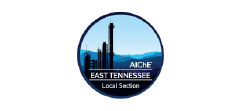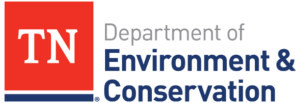TRACK 6 – ENGINEERING, CONSTRUCTION, LIFE CYCLE OPTIMIZATION
Click on seminar title below to read the abstract
Jacob Bubalo, P.E., Technology Innovation Program Manager, Worldwide Engineering & Construction Services, Eastman Chemical Company
& Ted Blackmon, Founder & General Partner, Construct-X
The integration of data and data systems is today one of the most difficult challenges of project management. In this session we will explore the value of Digital Threads from AWP supporting the realization of a Digital Twin. We will also look at ways that data integration and management can be improved through the use of new tools and processes. We will present a case study documenting Eastman’s AWP data integration successes and touch on Eastman’s SEIGA efforts. We will also project how industry AWP maturity levels will shift over the next five years because of improvements in data integration. Furthermore, we will explore the value of developing effective data-standards-based interoperability during the next five-year time horizon.
What attendees will learn:
- What is the value of Digital Threads and the creation of a Digital Twin?
- What are the challenges involved in integrating data?
- How did Eastman meet these challenges?
- How will the industry’s “AWP Maturity Index” shift over the next 5 years, given current trends?
- How might the development of effective data standards improve interoperability by 2025?
Keith Chambers, Vice President, Operations Management Software, AVEVA
Currently, the Chemical Industry major trends are related to sustainability, digitalization, and innovation. To remain competitive, they need to introduce new raw materials, energy recovery, circular economy, capture data to lower costs, and increase collaboration for better productivity.
Understanding the complexity of the enterprise is critical to enable the optimization of the entire value chain. Several digital technologies are available today, but the lack of enterprise perspective results in point solutions and siloed processes that leave significant value leaks. In this seminar, it will be discussed how to create a digitalization strategy focusing on optimizing the entire value chain.
What attendees will learn:
- Digitalization trends for operations, and optimization
- Challenges of achieving the value chain optimization
- Best practices to create a digitalization strategy to optimize the entire value chain
- Functional areas and potential benefits of value chain optimization
Elliott Lander, Managing Director, Atr Inc
We will review features and benefits of digital procedures. Far beyond “paper on glass”, digital procedures offer significant benefits for operators, including mobility, consistency, data collection and work guidance upgrades. In addition, the digital lifecycle can provide enhancements for procedure administration, procedure writing and training to help produce more accurate and usable procedures.
What attendees will learn:
- Limitations of conventional paper-based procedures
- Benefits of digital procedures
- The importance of incorporating human factor design into procedure outputs
- The process to move from paper to digital procedures
- Opportunities to provide additional inputs from integrated technologies
- Benefits of procedure data analytics to optimize operations
Elliott Lander, Managing Director, Atr Inc
In this session, we will review what is required to move from an MS Word, paper-based program to a step-based database technology providing lifecycle management and content output to essentially any format on any device. We will explore the critical steps and decisions required for successful migration and the critical elements to ensure a sustainable digital procedure program.
What attendees will learn:
- How to overcome key roadblocks
- Why conduct of operations and operational discipline are essential to success
- Necessary leadership, governance and accountabilities
- Resources and organizational support requirements
- Critical elements and KPIs of a sustainable procedure program
Kyle MacDonald , VP, Sales & Marketing
Unlike other engineered safety systems, a Fire & Gas Safety System assumes that an loss of containment will occur. The issue with this life safety system is that the deployment and use of gas detection is generally thought of as more art than science. The good news is that certain sensing element technologies, like Laser Based – Open Path Gas Detection, make selection of detector type, detector quantity, and detector placement more objective to increase both the probability of detection and also increase the overall effectiveness of your Fire & Gas Safety System to prevent an already bad situation from getting worse.
What attendees will learn:
- Understand the importance of the role that Sensing Elements play within an effective Fire & Gas Safety System.
- Demonstrate how large area coverage, fast speed of response, and low-end detection limits of Open Path Gas Detection increase the probability of detection and therefore the effectiveness of your Fire & Gas Safety System.
- Share Recognized And Generally Accepted Good Engineering Practices when it comes to designing, installing, and integrating Open Path Gas Detection into your existing Fire & Gas Safety System.
Clay Everson, VP & General Manager, Hunter Buildings
The concept of worker safety has always been at the forefront of the oil and gas industry. Due to several incidents, the industry standards were modified to include worker housing both temporary and permanent. The American Petroleum Institute implemented recommended practices 752, 753 and later 756 covered both temporary and permanent housing for workers within blast zones. Facility Siting studies which analyzed and assessed the blast potential were introduced to provide guidance on the nature of the blast requirements. When the first models were developed, they were standard sizes which were single modules for housing workers. Over time, the market grew and new requests came in which presented new engineering challenges to accommodate plant needs. As the market matured, these new possibilities gave clients the elaborate designs to meet their requirements while providing full safety for the occupants. In this presentation, we will examine the initial requirements and the maturation of the blast building market and the possibilities of engineering solutions.
What attendees will learn:
- Industry standards introduction and response
- Growth and maturation of blast structures both temporary and permanent
- Unique client requests and engineering challenges faced
- Product solutions for an expanding marketplace
Ted Blackmon, Founder and General Partner
& Abdel Ghani Sinno, Senior Director of Enterprise Client Success
What attendees will learn:
- What is Advanced Work Packaging and why should I be a part?
- What are the fundamental challenges to making AWP scalable to smaller, site-based projects?
- How will Eastman optimize its processes and technologies for AWP scalability?
- What were the critical barriers to implementation?
- Industry improvements expected in the next 5 years by 2025.
Marcelo Joaquim, Director of Technical Sales, Hexagon
Advanced Work Packing (AWP) is the overall process flow of all work packages. It is a planned, executable process that encompasses the work on an engineering, procurement, and construction (EPC) project, beginning with initial planning and continuing through detailed design and construction execution. Data sharing between Owner’s and EPC’s across multiple systems is fundamental on the AWP work process for early engagement of construction in advance to influence the upstream process as engineering, project controls, supply chain, etc.
What attendees will learn:
How Advanced Work Packing processes can impact productivity and what should be expected from the interaction of multiple systems as engineering design, document management, materials management, supply chain, scheduling and project controls.
Mark Bauman, VP Marketing
Process unit shutdowns, turnarounds, and outages (STOs) are a core element of standard operations in asset-intensive industries such as chemical manufacturing. Many of the most common issues encountered during regular STO maintenance actions can be addressed by integrating digital twins into the maintenance process.
By utilizing digital twins, turnaround teams can dramatically improve communication and collaboration throughout their enterprise through the “single pane of glass” that digital twins offer. Digital twins can become a unifying point of truth when organizations are seeking to understand and agree upon an asset’s true current state, precise location, nearby equipment, physical environment, dimensions and spacing. This 3D model information, and any other relevant asset documentation appended to the digital twin model, can be used to support every phase of the turnaround process.
What attendees will learn
• What is a digital twin?
• How digital twins can be used to address typical challenges encountered during turnarounds.
• Key considerations and watch-outs when leading a digital asset inspection transformation initiative.
• Use cases on how chemical companies are leveraging digital twins to improve their STO (shutdown/turnaround/outage) program performance.



